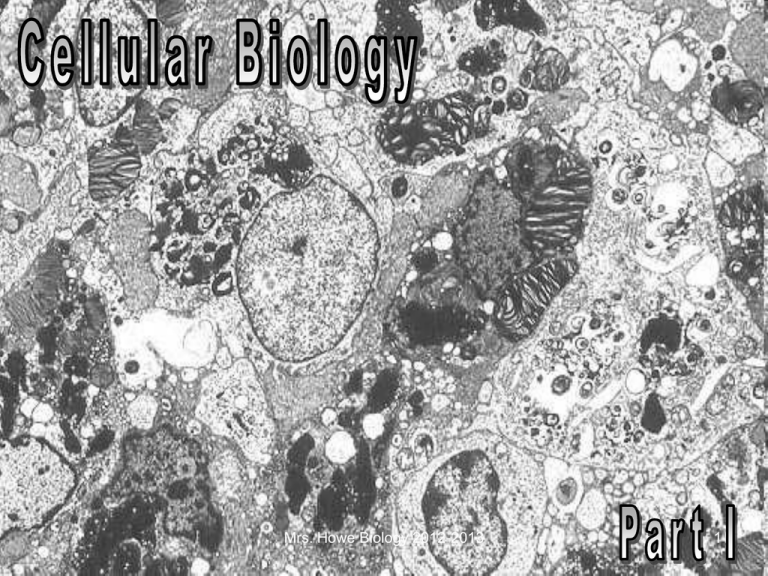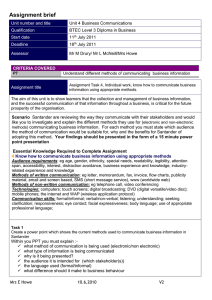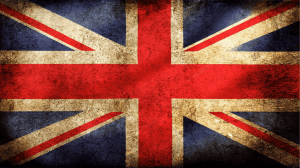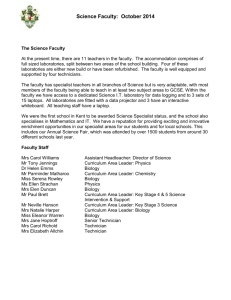Organs
advertisement

Mrs. Howe Biology 2012-2013 1 Area of Focus: What does it mean to be living? Mrs. Howe Biology 2012-2013 2 Copyright © 2010 Ryan P. Murphy • Video! Introduction to the Characteristics of Life…Maybe. – http://www.youtube.com/watch?v=juxLuo-sH6M Mrs. Howe Biology 2012-2013 3 Organism: Any living thing Mrs. Howe Biology 2012-2013 4 Copyright © 2010 Ryan P. Murphy Characteristics of living things - - - - Mrs. Howe Biology 2012-2013 5 Copyright © 2010 Ryan P. Murphy Made of SPONCH ingredients. Mrs. Howe Biology 2012-2013 6 Copyright © 2010 Ryan P. Murphy • 25 of the 92 naturally occurring elements are essential for life. – SPONCH elements are the most biologically important. Mrs. Howe Biology 2012-2013 7 • Organic Chemistry: The chemistry of carbon compounds. – Carbon is the duct tape of life. It holds everything together. Mrs. Howe Biology 2012-2013 8 • Percentage of SPONCH elements in living things. • • • • • • • S. Sulfur P. Phosphorus O. Oxygen N. Nitrogen C. Carbon H. Hydrogen Other (Trace) • Sulfur, Sodium, Magnesium, Copper, Zinc, Selenium, Molybdenum, Fluorine, Chlorine, Iodine, Manganese, Cobalt, Iron Lithium, Strontium, Aluminum, Silicon, Lead, Vanadium, Arsenic, Bromine Trace 1.0% 65.0% 3.3% 18.5% 9.56% 3.0% Mrs. Howe Biology 2012-2013 9 Copyright © 2010 Ryan P. Murphy Characteristics of living things Made of SPONCH ingredients. - - - - Mrs. Howe Biology 2012-2013 10 Copyright © 2010 Ryan P. Murphy Made of cells. Mrs. Howe Biology 2012-2013 11 Copyright © 2010 Ryan P. Murphy Moves. Mrs. Howe Biology 2012-2013 12 Copyright © 2010 Ryan P. Murphy • Plants have limited movement but they can move. Mrs. Howe Biology 2012-2013 13 Responds to a stimulus. Mrs. Howe Biology 2012-2013 14 Copyright © 2010 Ryan P. Murphy Uses Energy. Mrs. Howe Biology 2012-2013 15 Copyright © 2010 Ryan P. Murphy Adjusts to Changes. Maintains steady body conditions. Maintains homeostasis. Mrs. Howe Biology 2012-2013 16 Copyright © 2010 Ryan P. Murphy Reproduces. Mrs. Howe Biology 2012-2013 17 Copyright © 2010 Ryan P. Murphy Has a life span. Mrs. Howe Biology 2012-2013 18 Copyright © 2010 Ryan P. Murphy Grows and Develops. Grow-To increase in size. Develop-To change in ability. Mrs. Howe Biology 2012-2013 19 Copyright © 2010 Ryan P. Murphy Adapts to Change. Evolves / Inherits traits that promote survival. Mrs. Howe Biology 2012-2013 20 Copyright © 2010 Ryan P. Murphy • Do turtles spontaneously emerge from the sand as new life? Mrs. Howe Biology 2012-2013 21 • Answer. No, turtles lay eggs in the sand that hatch into baby turtles. Mrs. Howe Biology 2012-2013 22 • Spontaneous origin (abiogenesis): Life came from non-living materials. Mrs. Howe Biology 2012-2013 23 Copyright © 2010 Ryan P. Murphy • Francesco Redi – (1668) – People believed flies spontaneously came from meat. – Redi covered one flask, left one open to air. – Observed flies laying eggs on meat. – Flies come from flies. Life comes from life. Mrs. Howe Biology 2012-2013 24 Copyright © 2010 Ryan P. Murphy • Life only comes from pre-existing life. Except of course for the first form of life. Science has disproven but also suggests abiogenesis. Mrs. Howe Biology 2012-2013 25 Copyright © 2010 Ryan P. Murphy • Pasteur' s experiments (1860' s) showed that micro-organisms are even carried in the air. • Both flasks boiled to sterilize Micro-organisms trapped in swan • Open to air (broth spoils). and broth does not spoil. Mrs. Howe Biology 2012-2013 26 Copyright © 2010 Ryan P. Murphy • As a result (Pasteur) – Sterilization of tools – Helped save millions. Mrs. Howe Biology 2012-2013 27 Needs of Living Things - Mrs. Howe Biology 2012-2013 28 Copyright © 2010 Ryan P. Murphy Energy: Supplied by the sun Mrs. Howe Biology 2012-2013 29 Copyright © 2010 Ryan P. Murphy Oxygen: To burn the food in cells. (Respiration) Mrs. Howe Biology 2012-2013 30 Copyright © 2010 Ryan P. Murphy Oxygen: To burn the food in cells. (Respiration) Mrs. Howe Biology 2012-2013 31 Copyright © 2010 Ryan P. Murphy Water: To keep things moving in and out of cells. (Universal Solvent) Mrs. Howe Biology 2012-2013 32 Copyright © 2010 Ryan P. Murphy Minerals- For proper chemical balance. Mrs. Howe Biology 2012-2013 33 Copyright © 2010 Ryan P. Murphy New Area of Focus: Cellular Biology Mrs. Howe Biology 2012-2013 34 Copyright © 2010 Ryan P. Murphy Mrs. Howe Biology 2012-2013 35 • Activity! Looking at animal cells. • Procedure – Use a tooth pick to scratch along the inside of your cheek. – Smear the tip of the toothpick on glass slide. – Add one drop of water to the smear. – Gently place cover slip on top of drop. – Observe and make a sketch of what you see using a Petri dish to make a circle. Mrs. Howe Biology 2012-2013 36 Copyright © 2010 Ryan P. Murphy • Which is a cheek cell, and which is an onion cell? What is the difference? Mrs. Howe Biology 2012-2013 37 Copyright © 2010 Ryan P. Murphy • Which is a cheek cell, and which is an onion cell? What is the difference? Mrs. Howe Biology 2012-2013 38 Copyright © 2010 Ryan P. Murphy • Which is a cheek cell, and which is an onion cell? What is the difference? Mrs. Howe Biology 2012-2013 39 Copyright © 2010 Ryan P. Murphy Animal Cell (Cheek) Plant Cell (Onion) Mrs. Howe Biology 2012-2013 40 Copyright © 2010 Ryan P. Murphy • Questions? Plant Cell and Animal Cell – What are differences you noticed between a plant cell and an animal cell – Study these pictures and the next two slides. – What are the similarities? Mrs. Howe Biology 2012-2013 41 Copyright © 2010 Ryan P. Murphy Large Central Vacuole Mrs. Howe Biology 2012-2013 42 Mrs. Howe Biology 2012-2013 43 • Is this a plant cell or animal cell? Mrs. Howe Biology 2012-2013 44 Copyright © 2010 Ryan P. Murphy • Answer! Plant Cell. • Plant cells have cell walls that perform a variety of functions. Mrs. Howe Biology 2012-2013 45 • Is this a plant or animal cell? Mrs. Howe Biology 2012-2013 46 Copyright © 2010 Ryan P. Murphy • Answer! A plant cell – Plants cell have photosynthetic chloroplasts that are usually green. (They have their own DNA) Mrs. Howe Biology 2012-2013 47 Copyright © 2010 Ryan P. Murphy • Is this a plant cell, or animal cell? Mrs. Howe Biology 2012-2013 48 Copyright © 2010 Ryan P. Murphy • Answer! Plant Cell. – Plant cell have a large central vacuole to hold food, water, nutrients, and waste. Mrs. Howe Biology 2012-2013 49 Copyright © 2010 Ryan P. Murphy • Is this a plant cell, or animal cell? Why? Mrs. Howe Biology 2012-2013 50 Copyright © 2010 Ryan P. Murphy • Answer! Animal Cell. – Irregular shape, no cell wall, no central vacuole, no chloroplasts. Mrs. Howe Biology 2012-2013 51 Copyright © 2010 Ryan P. Murphy • Plant and animal cells both have… – Nucleus – Cytoplasm – Cell Membrane. – Other similar organelles. Mrs. Howe Biology 2012-2013 52 Copyright © 2010 Ryan P. Murphy • Plant and animal cells both have… – Nucleus – Cytoplasm – Cell Membrane. – Other similar organelles. Mrs. Howe Biology 2012-2013 53 Copyright © 2010 Ryan P. Murphy • Plant and animal cells both have… – Nucleus – Cytoplasm – Cell Membrane. – Other similar organelles. – Many of the same processes. Mrs. Howe Biology 2012-2013 54 Copyright © 2010 Ryan P. Murphy • Plant and animal cells both have… – Many of the same processes. • • • • Cellular Respiration Protein synthesis Cell transport Many more Mrs. Howe Biology 2012-2013 55 Copyright © 2010 Ryan P. Murphy • Try and name some the cells in the next few pictures. Mrs. Howe Biology 2012-2013 56 Copyright © 2010 Ryan P. Murphy Sex Cells Mrs. Howe Biology 2012-2013 57 Nerve Cell Mrs. Howe Biology 2012-2013 58 Mrs. Howe Biology 2012-2013 59 Bone Cell Mrs. Howe Biology 2012-2013 60 Animation of Skin Cells Mrs. Howe Biology 2012-2013 61 Muscle Cells Mrs. Howe Biology 2012-2013 62 Human Embryo at 8 Cells. Mrs. Howe Biology 2012-2013 63 Bacteria (Bacilli) Mrs. Howe Biology 2012-2013 64 orm ollows unction Mrs. Howe Biology 2012-2013 65 Copyright © 2010 Ryan P. Murphy Form Follows Function: Parts of the cell are shaped to perform a particular job. Mrs. Howe Biology 2012-2013 66 Copyright © 2010 Ryan P. Murphy • Rate this toothbrush on a scale of 1-10 for its ability to clean your teeth and gums. Why? • 1 is the lowest, 10 is the highest. Mrs. Howe Biology 2012-2013 67 • The modern toothbrush has… – Cross action bristles – Angled bristles – Gum massagers – Rubber grips – Angled head – Tapered – Self powered? Mrs. Howe Biology 2012-2013 68 Copyright © 2010 Ryan P. Murphy “Whenever we see the FFF (Form Follows Function) We can say it loud. orm ollows -Not unruly however incase it interferes with other classes. unction Mrs. Howe Biology 2012-2013 69 Copyright © 2010 Ryan P. Murphy • Activity! Find a structure in the room and describe how its form help it perform a job. – Stand by it and be ready to tell the class all about how its Form Follows Function. Mrs. Howe Biology 2012-2013 70 Copyright © 2010 Ryan P. Murphy Cells are the structural and functional units of all living organisms. Humans have some 50-75 Trillion Multi-cellular (More than one cell) Some Protista have 1 - Unicellular Mrs. Howe Biology 2012-2013 71 Copyright © 2010 Ryan P. Murphy • Activity! Visit a virtual cell to get an idea of what we will be studying. • http://www.wisconline.com/Objects/ViewObject.aspx?ID=AP11403 Mrs. Howe Biology 2012-2013 72 • Different cells include… – Absorbing Cells such as those in your intestines aid in digestion. Mrs. Howe Biology 2012-2013 73 Copyright © 2010 Ryan P. Murphy • Different cells include… – Assembly Cells: Cells that put chemical substances together. –Break down food, produce hormones. Pancreas Mrs. Howe Biology 2012-2013 74 Copyright © 2010 Ryan P. Murphy • Different cells include… – Movement Cells: Cells that can contract and shorten. Muscle Cells. Mrs. Howe Biology 2012-2013 75 Copyright © 2010 Ryan P. Murphy • Other Cells in the human body include… Nerve Cells Fat Cells Sex Cells Egg- female Sperm - Male Skin Cells Mrs. Howe Biology 2012-2013 76 Copyright © 2010 Ryan P. Murphy • Other Cells in the human body include… Nerve Cells Liver Cell Fat Cells Sex Cells Egg- female Sperm - Male Skin Cells Mrs. Howe Biology 2012-2013 77 Copyright © 2010 Ryan P. Murphy • Other Cells in the human body include… Nerve Cells Liver Cell Fat Cells 100’s of more cell types Sex Cells Egg- female Sperm - Male Skin Cells Mrs. Howe Biology 2012-2013 78 Copyright © 2010 Ryan P. Murphy • Many cells make a tissue. Mrs. Howe Biology 2012-2013 79 Copyright © 2010 Ryan P. Murphy • Tissue: A group of similar cells that perform the same function. Mrs. Howe Biology 2012-2013 80 Copyright © 2010 Ryan P. Murphy • Some common muscle tissue in the human body include… • Muscle Tissue: Can contract / shorten. Smooth Muscle Tissue Skeletal Muscle Cardiac Muscle Mrs. Howe Biology 2012-2013 81 Copyright © 2010 Ryan P. Murphy • Some common connective tissues in the human body include… Bone Tissue Cartilage Fibrous Connective Tissue Mrs. Howe Biology 2012-2013 82 Copyright © 2010 Ryan P. Murphy • Some common connective tissues in the human body include… Bone Tissue Adipose – Fat Tissue Fibrous Blood Connective Tissue Mrs. Howe Biology 2012-2013 83 Copyright © 2010 Ryan P. Murphy • Some common nervous tissues in the human body include… Mrs. Howe Biology 2012-2013 84 Copyright © 2010 Ryan P. Murphy • Some common epithelial tissues in the human body include… Simple Stratified Intestines Blue Whale Skin Mrs. Howe Biology 2012-2013 85 Copyright © 2010 Ryan P. Murphy • Video Link! (Optional) Specialized Cells – http://www.youtube.com/watch?v=I8uXewS9dJU Mrs. Howe Biology 2012-2013 86 Copyright © 2010 Ryan P. Murphy • A group of tissue makes an organ. Mrs. Howe Biology 2012-2013 87 Copyright © 2010 Ryan P. Murphy • Organ: A group of different tissues with a specific job Mrs. Howe Biology 2012-2013 88 Copyright © 2010 Ryan P. Murphy • Organ: A group of different tissues with a specific job Mrs. Howe Biology 2012-2013 89 Copyright © 2010 Ryan P. Murphy • Organ: A group of different tissues with a specific job Mrs. Howe Biology 2012-2013 90 Copyright © 2010 Ryan P. Murphy Mrs. Howe Biology 2012-2013 91 • Picture of early microscope and first drawings of cells by Robert Hooke. Mrs. Howe Biology 2012-2013 92 Copyright © 2010 Ryan P. Murphy • Why do you think Robert Hooke called them cells? Named after monastery cells. Mrs. Howe Biology 2012-2013 93 Copyright © 2010 Ryan P. Murphy • 1600’s. – Anton van Leeuwenhoek first described living cells as seen through a simple microscope. Mrs. Howe Biology 2012-2013 94 • Anton van Leeuwenhoek – Investigated… – Bacteria. – Protists. – Sperm Cells. – Blood Cells. – Nematodes (roundworms) – His research, which was widely circulated, opened up an entire world of microscopic life to the awareness of scientists. Mrs. Howe Biology 2012-2013 95 Copyright © 2010 Ryan P. Murphy • Activity! Putting an egg into vinegar to sit for 2 days. – We will observe the eggs later in the week. – Weigh the eggs before immersing them. “What are you doing with my eggs?” Mrs. Howe Biology 2012-2013 96 Copyright © 2010 Ryan P. Murphy • The Cell Theory • Translate the Latin “Omnis cellula e cellula” Mrs. Howe Biology 2012-2013 97 Copyright © 2010 Ryan P. Murphy Rudolf Virchow “All cells come from preexisting cells.” Mrs. Howe Biology 2012-2013 98 Robert Hooke First Cells Robert Hooke First Cells Mrs. Howe Biology 2012-2013 99 Copyright © 2010 Ryan P. Murphy • Robert Hooke – First Cells Anton van Leeuwenhoek - First living cells Mrs. Howe Biology 2012-2013 100 Copyright © 2010 Ryan P. Murphy • Rudolf Virchow (photograph) Anton van Leeuwenhoek Mrs. Howe Biology 2012-2013 101 Copyright © 2010 Ryan P. Murphy • Schleiden and Schwann used the work of Virchow and improved the cell theory. Mrs. Howe Biology 2012-2013 102 Copyright © 2010 Ryan P. Murphy Modern Cell Theory - - Mrs. Howe Biology 2012-2013 103 Copyright © 2010 Ryan P. Murphy The cell is the basic unit of structure and function. Mrs. Howe Biology 2012-2013 104 Copyright © 2010 Ryan P. Murphy Living things are made of cells. Not made of Cells Mrs. Howe Biology 2012-2013 105 Copyright © 2010 Ryan P. Murphy All cells come from pre-existing cells. Mrs. Howe Biology 2012-2013 106 Cells contain genetic information. Mrs. Howe Biology 2012-2013 107 Copyright © 2010 Ryan P. Murphy All cells are similar in composition Mrs. Howe Biology 2012-2013 108 Copyright © 2010 Ryan P. Murphy Energy flow of life occurs in cells. Mrs. Howe Biology 2012-2013 109 Copyright © 2010 Ryan P. Murphy • Humans are very similar to all other eukaryotic organisms as our cellular composition is closely related. – We are made of the same cells. Mrs. Howe Biology 2012-2013 110 Copyright © 2010 Ryan P. Murphy • Humans are very similar to all other eukaryotic organisms as our cellular composition is closely related. – We are made of the same cells. Eukaryotic Cells Prokaryotic Cells Mrs. Howe Biology 2012-2013 111 Copyright © 2010 Ryan P. Murphy • Human Cell Frog Cell Similar in composition. Mrs. Howe Biology 2012-2013 112 • Human Cell Eukaryotic – Nucleus and membrane bound organelles. Bacteria Cell Prokaryotic Cell – Nucleoid, DNA free floats in cytoplasm, Mrs. Howe Biology 2012-2013 113 There are two main groups of cells. Prokaryotic Eukaryotic Mrs. Howe Biology 2012-2013 114 Copyright © 2010 Ryan P. Murphy • What are some of the similarities between Prokaryotic and Eukaryotic Cells? Mrs. Howe Biology 2012-2013 115 Copyright © 2010 Ryan P. Murphy • Answer: They both have all of these. Mrs. Howe Biology 2012-2013 116 Copyright © 2010 Ryan P. Murphy • What are some of the differences between Prokaryotic and Eukaryotic Cells? Mrs. Howe Biology 2012-2013 117 Copyright © 2010 Ryan P. Murphy • Answer: Eukaryotic cells have a nucleus, and are much larger and have more organelles. (More complex) Mrs. Howe Biology 2012-2013 118 Copyright © 2010 Ryan P. Murphy Prokaryotic cells - Mrs. Howe Biology 2012-2013 119 Copyright © 2010 Ryan P. Murphy No nuclear membrane Mrs. Howe Biology 2012-2013 120 Genetic material is free in cytoplasm. Mrs. Howe Biology 2012-2013 121 Copyright © 2010 Ryan P. Murphy No membrane-bound organelles Mrs. Howe Biology 2012-2013 122 Copyright © 2010 Ryan P. Murphy Most primitive type of cell appeared about 3.8 billion years ago. Mrs. Howe Biology 2012-2013 123 Copyright © 2010 Ryan P. Murphy • Eukaryotic Cells. We have eukaryotic cells. Mrs. Howe Biology 2012-2013 124 Copyright © 2010 Ryan P. Murphy Eukaryotic Cells - - Mrs. Howe Biology 2012-2013 125 Copyright © 2010 Ryan P. Murphy Nuclear membrane surrounding genetic material Mrs. Howe Biology 2012-2013 126 Copyright © 2010 Ryan P. Murphy Numerous membrane-bound organelles Mrs. Howe Biology 2012-2013 127 Copyright © 2010 Ryan P. Murphy Complex internal structure. Mrs. Howe Biology 2012-2013 128 Copyright © 2010 Ryan P. Murphy Appeared approximately 2.2 billion years ago. Mrs. Howe Biology 2012-2013 129 Copyright © 2010 Ryan P. Murphy • Activity: Each student will pick a cellular organelle and create a poster in the shape of that organelle. (Requirement sheet) Requirements on Poster. – ● Name of the Organelle – ● Shape (Structure Function ) – ● Function of the Organelle / Job – ● How it performs this function – ● Anything related to SPONCH elements – ● Where it is located in the cell? – ● Other cool things not mentioned. Mrs. Howe Biology 2012-2013 130 Copyright © 2010 Ryan P. Murphy • Example – Without text requirements. Put name on it. Lots of informative text about the mitochondria will go around the organelle. Lots of informative text about the mitochondria will go around the organelle. Mrs. Howe Biology 2012-2013 131 Copyright © 2010 Ryan P. Murphy Name Name Mrs. Howe Biology 2012-2013 132 Mrs. Howe Biology 2012-2013 133





